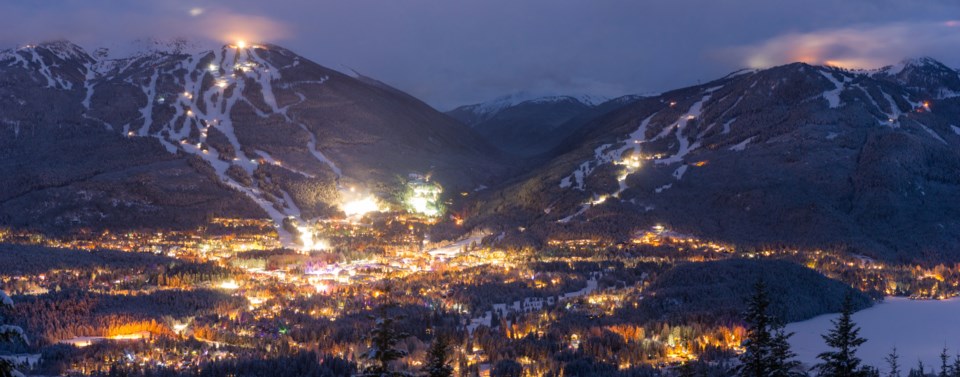In May 2021, I sat in on a virtual Whistler Institute session focusing on the future of tourism post-COVID-19.
The event—called Tourism: Building Back Better—posed a pair of important questions: could the pandemic serve as an opportunity for a “reset and a reinvention” for the tourism industry; and can tourism recover by being “greener, smarter and less crowded?”
Both questions stemmed from a New York Times article on the concept of regenerative travel—or leaving a place better than you found it—and the conversation they spawned amongst panellists is well worth a listen (you can still watch a recording of the event on the Whistler Institute’s YouTube page).
But revisiting the piece I wrote about the event one year later—a cover feature titled “Tourism takes a breath: When COVID-19 recedes, will it be business as usual?”—I didn’t have to think hard in answering my own question.
Yes, it is absolutely going to be business as usual.
Not only that, but by the looks of it, it’s going to be business far beyond usual: last summer was the busiest on record for visitation to Whistler parks (a whopping 35 per cent over 2020, and an astounding 77 per cent over 2019).
What does summer 2022 hold? Barring another “black swan” disaster, I don’t expect those numbers to go backwards.
I’ve written before in this space about “unconstrained growth,” and the longer-term visitation projections the Resort Municipality of Whistler is working with—and they aren’t pretty.
On a provincial level, the B.C. government launched its new three-year roadmap for the tourism industry on March 11, and there’s nothing to suggest a reinvented, smarter take on travel—everything about it screams “business as usual.”
In fact, the main guidance of the roadmap is to rebuild tourism to 2019 levels by 2024.
Let’s take a second to reminisce about 2019, and the topic of the day. What was that buzzword again? Oh right. Overtourism.
Crowded parks. Crowded trails. Packed highways. Jammed parking lots. Three million annual visitors and adding more every year.
Then, in an instant, it was gone. A pandemic came, and the visitors left.
Suddenly, it was just us.
Our leaders spoke of it as if it were a blessing and a curse—that while the social and financial impacts were no doubt devastating, the pandemic afforded us a chance to reconsider our collective trajectory, and become masters of our own tourism destiny.
So… as B.C. and Canada’s pandemic strategy shifts and border measures ease, are we prepared for what comes next?
Have we got our shiny new overtourism strategy firmly in place? Our levers and controls to limit visitation, or ensure it’s properly dispersed and managed?
No?
Well, at the very least we’ve got enough staff to serve the visitors who are coming, right?
Oh.
It’s too early to say with certainty if all the nice words about building back better and being responsible stewards of tourism were just empty platitudes. It’s possible the pandemic actually has course-corrected us to a more sustainable path. Only time will tell.
At the RMOW, a scenario-planning exercise (dubbed “The Whistler Sessions”) wrapped earlier this month, which was to consider some more pertinent questions: what is the current state on the ground in the resort? What could happen in the years and decades ahead?
And what must Whistler do—individually and collectively—to recover from COVID-19 while staying true to the vision laid out in its new Official Community Plan?
We’re still waiting to see the results of that work—and whether or not it will have any impact at all on the long-term sustainability of tourism in Whistler.
But if you thought Whistler was busy before, I sense we’re about to find out what industry stakeholders mean when they speak of “pent-up demand.”
According to Google’s Travel Insights tool, demand for travel to Canada (as indicated by search volume) has been tracking well above 2021 all year—and steadily increasing since January.
On Jan. 1, Google showed worldwide interest in Canada as a travel destination was 37-per-cent higher than on Jan. 1, 2021. That interest has continued to grow ever since, and as of March 21 was sitting 52-per-cent higher than the same date last year.
On an international scale, Canada ranks 14th in terms of destination interest, and Whistler itself doesn’t crack the top 50. But singling out Canadian destinations, Whistler finds itself in 10th place in terms of demand (three points above Victoria and three points below Edmonton—Toronto, Vancouver and Montreal took the top three, respectively).
Google’s Travel Insights tool was launched in July 2021, and it offers a fascinating glimpse into the potential near future of Whistler—and for tourism as a whole.
I say potential, because tourism futures always come with a caveat, be it geopolitical, economic or environmental—we never know when the next black swan will arrive in town. I suppose that line of thinking is partially behind the great rush to return to where we were pre-pandemic—make hay while the sun is shining, and all.
Whistler Councillor John Grills, in an interview with Pique last year, noted he was reading a book on overtourism when the pandemic hit.
In the context of COVID and its myriad complications, suddenly the book had lost some relevance, he said.
Well, he’d best pick it up again, and share it with his fellow councillors—or keep it somewhere safe for Whistler’s next council.
I have a feeling it’s about to regain its relevance.




